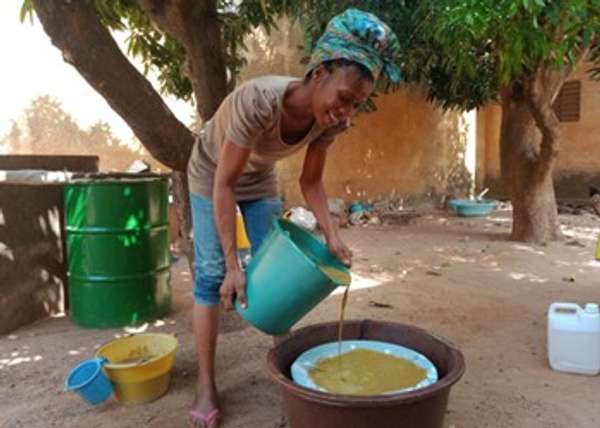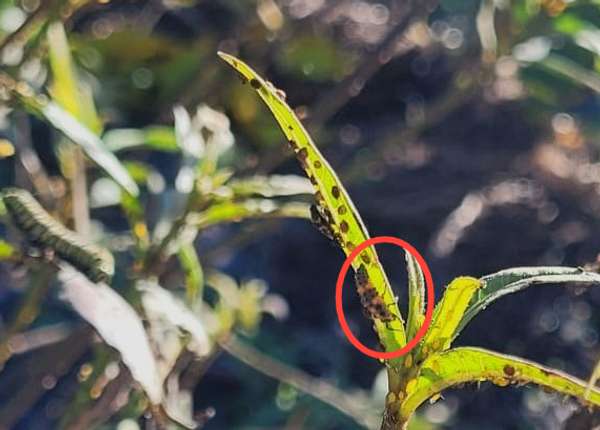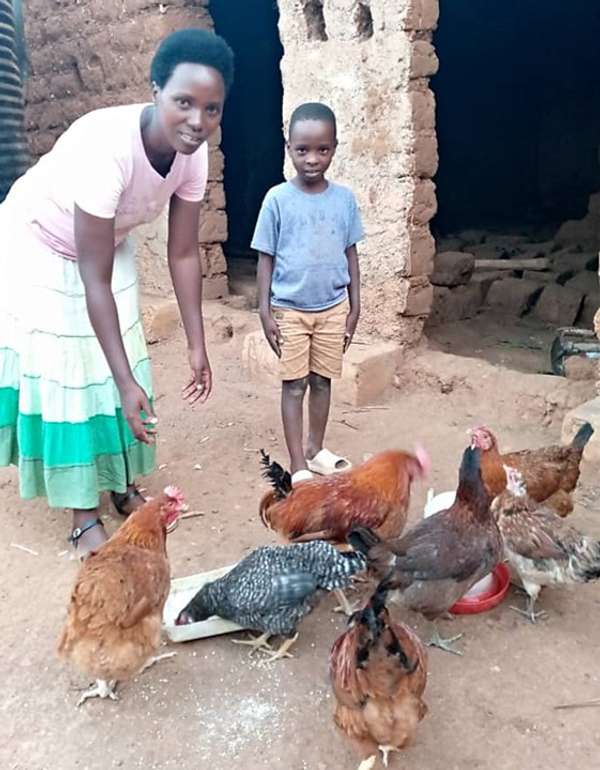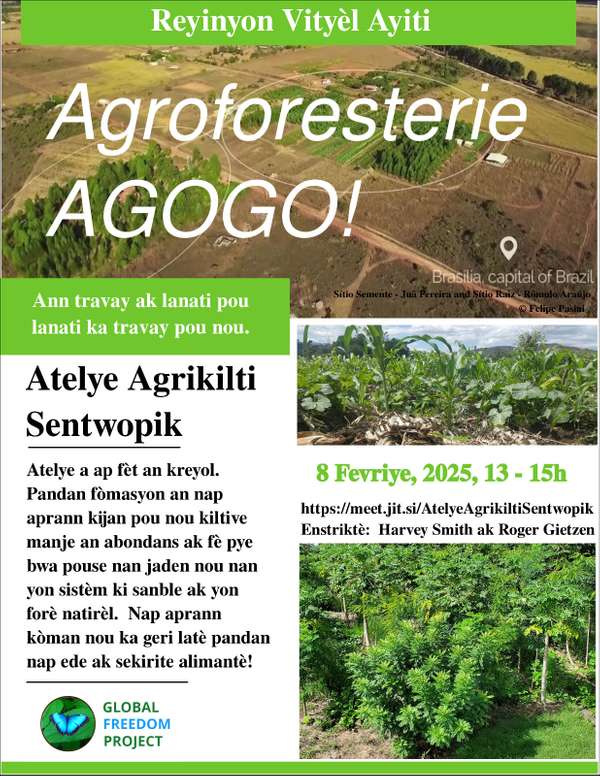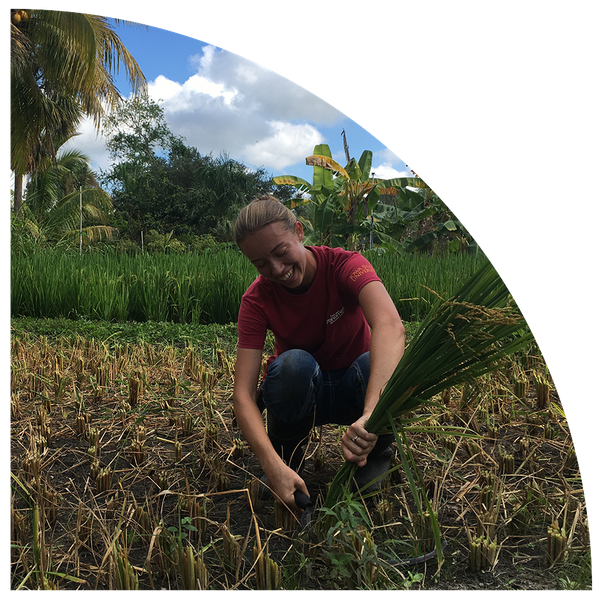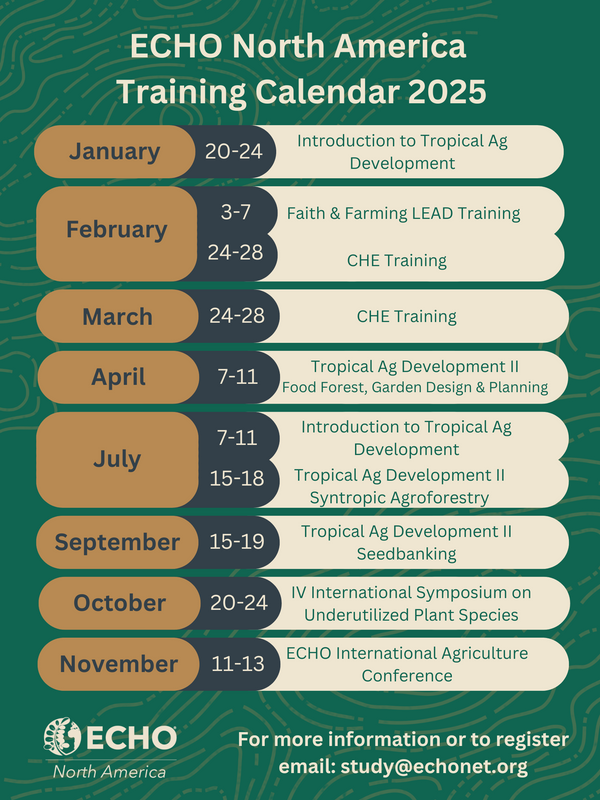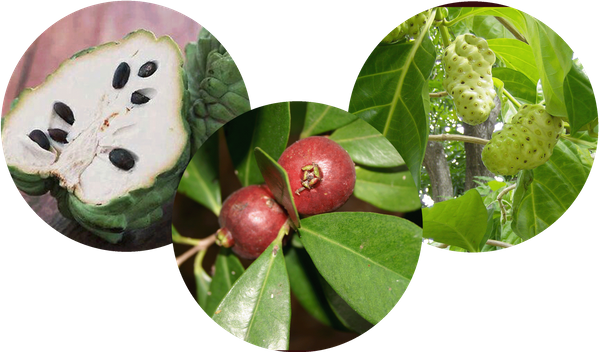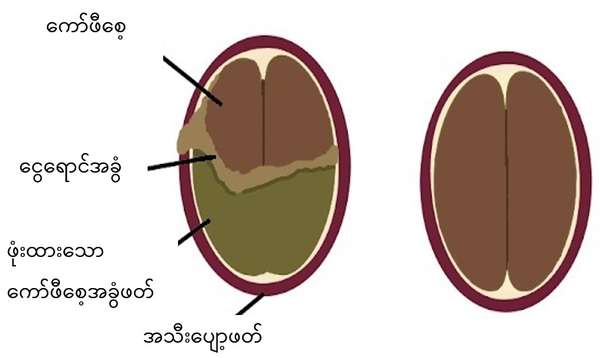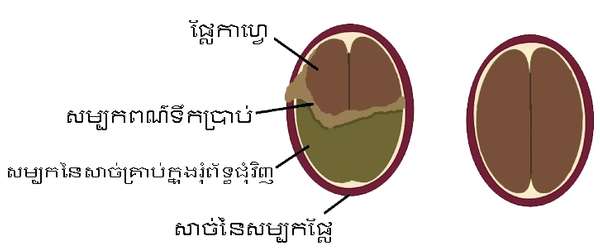Mises à jour de ECHOcommunity
EDN Numéro 168 Maintenant disponible 2025-02-11
Sommaire
- L’engrais liquide organique protecteur de 10 jours
- Comparaison des tiges de bananiers crues, bouillies et fermentées destinées à être utilisées dans les aliments pour porcs produits à la ferme
- L’eau grise pour l’arrosage des plantes
- De la Banque de semences de ECHO Vigna vexillata, Une légumineuse polyvalente aux tubercules comestibles
- Livres, Sites Web, et Autres Ressources: Invitation à soumettre un article et Intervenants et thèmes importants du Symposium sur les cultures sous-utilisées d’octobre 2025
L’engrais liquide organique protecteur de 10 jours
Hassan Djebro
Extrait:
Pour protéger les plantes contre les ravageurs et les maladies et pour accélérer leur croissance, traiter les semences avec l’engrais liquide protecteur avant le semis. Enrober d’abord 1 kg de graines dans 250 ml d’engrais liquide protecteur non dilué. Sécher ensuite les graines à l’ombre avant le semis. Pour protéger les racines des plants et les boutures de légumes, tremper les racines des plants de légumes (oignons, tomates, laitues, choux, etc.) et des boutures (canne à sucre, manioc, pommes de terre, etc.) dans une dilution de 250 ml d’engrais protecteur liquide pour 1 L d’eau pendant 30 minutes avant la plantation. Pour la fertilisation des cultures, l’engrais protecteur liquide est dilué puis utilisé sur toutes les cultures, soit par pulvérisation, soit par irrigation, soit en l’appliquant autour des semis et des arbres fruitiers.
ECHO East Africa Update: Lablab (Ngwara) 2025-02-04
During the Ngwara field day, Mr. Emmanuel Kasembe, Iles de Paix Tanzania Technical Advisor, and Bonny, ECHO East Africa Technical Advisor, facilitated an open discussion on Ngwara-related topics. The discussion covered various aspects, including planting techniques, uses, markets, and more. Visitors had the opportunity to test the seed coat removal machine designed by Engineer Naomi from Agriculture Seed Agency. The prototype underwent testing using Ngwara seeds. The removal of seed coats reduces cooking time of the seeds. Other experienced Ngwara cooks who visited the ECHO table during the day suggested avoiding the removal of seed coats before cooking, as it results in the loss of certain nutrients found in the seed coats. As part of the day's activities, ECHO interns served Ngwara beans and cooked Ngwara leaves to the event participants.
Encouraging predatory insects in your garden 2025-01-28
Our normal instinct upon finding any pest species, such as aphids, in or anywhere near our gardens is to eradicate all of them. However, is this always the best course of action? An important part of integrated pest management is encouraging predatory species of insects in your garden. Predatory insects need a certain level of pest insects to feed on, otherwise their populations will decline. The lack of predatory insects can then lead to even higher levels of pests in the next life cycle.
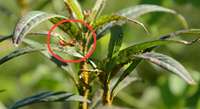
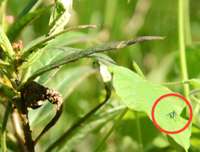
If you have any examples of plants that serve as predatory species banks like this, we would love to hear about them in the ECHO Community.
Community Animal Health Worker New Resources! 2025-01-21
ECHOcommunity’s collection of Community Animal Health Worker (CAHW) Resources has been enhanced recently by the addition of 3 outstanding offerings. Vétérinaires Sans Frontières International has recently published a Handbook for Planning and Managing CAHW Programmes (2024) with translations in English, French, Spanish, Portuguese, and Arabic.
From the International Animal Health Consultants, we have received 3 translations (English, Mandarin, French) of the Handbook for Animal Health (2007/2018).
And from the Christian Veterinary Mission, we have received 3 translations (English, Spanish, Thai) of Where There is No Animal Doctor (Rev 2016).
Additional translations will be posted if they become available. All of these books are downloadable in the ECHO Community Mobile App, as well.
Agroforesterie AGOGO! 2025-01-15
Tout moun yo akeyi yo rantre nan Harvey ak tèt mwen pou yon fòmasyon sou entènèt teyori syntropic. Si ou te patisipe nan atelye nou an nan tan lontan, se pral menm sijè a nou te kouvri la. Li pral an Kreyol sèlman. Si w konnen yon moun ki ka benefisye, tanpri pataje envitasyon an. Tout moun akeyi. Anba a se lyen pou rantre nan apèl videyo a. Li ka louvri ak yon navigatè. Pa bezwen jwenn aplikasyon an oswa kreye yon kont. Mwen tann evènman an.
Roger
2025/2026 ECHO North America Internship Application Deadline 2025-01-14
We are looking for passionate, mission minded, farm loving applicants for the 2025/26 ECHO North America Regional Impact Center internship. This year-long program is an intensive hands-on training in tropical agriculture for community development.
Apply soon! Applications close January 20th. Use the link below for more information about the internship and how to apply.
ECHO North America 2025 Upcoming Trainings 2025-01-07
We have some exciting training opportunities coming up in 2025!
Registration for these trainings include:
- Instruction with on-farm workshops
- Consultation with experienced staff
- Food (breakfast, lunch and dinner)
- Lodging
Don’t miss the these training opportunities!
Seasonal Seeds Available from the ECHO Global Seed Bank 2024-12-24
Some seeds are only seasonally available from our ECHO Global Seed Bank due to their short lifespan. We would like you to know that we have the following seeds available right now. Click the crop name for more information:
- Green sugar apple (Annona squamosa) is a medium to tall tree that produces sweet, creamy fruits. Fruits are mature when green.
- Atemoya (Annona squamosa X cherimola) is a deciduous fruit tree up to 7m tall. Cross between sugar apple and cherimola.
- Noni (Morinda citrifolia) is a small tree from Southeast Asia that is tolerant of a wide range of soil conditions. Noni is often used medicinally.
- Strawberry fruit (Muntingia calabura) is a fast-growing, fruit producing shade tree. Edible, sweet red fruit.
ကျွဲနွားတိရစ္ဆာန်အတွက်အစာအဖြစ်အစားထိုးရန်ကော်ဖီစေ့အခွံမျာ 2024-12-19
ဤဆောင်းပါသည် ဘွန်ဆွန်း သန်ရှရီသွန်၊ အေဘရမ် ဂျေ၊ ဘစ်လာ နှင့် ပက်ထရစ် ဂျေ၊ ထရေးလ်တို့မှပြုလုပ်ခဲ့သည့် အီးစီအိပ်ချ်အို သုတေသနကို အကျည်းချုပ်ထားခြင်းဖြစ်သည်။
ထို့အပြင် ကော်ဖီစေ့အခွံဖတ် ၂၀၀ ဂရမ်သို့မဟုတ် ၁ကေဂျီ ရှိသည့်လယ်ယာ-ထုတ် ထပ်ဆောင်းအစာကိုမစားမီနှင့် စားပြီး သည့်နွားများ၏ခန္ဓာတွင်းရှိစဲလ်အရေအတွက်ကိုတိုင်းတာရာတွင်စာရင်းကိန်းဂဏန်းအရသိသာထင်ရှားသော ခြားနားမှုကိုတိုင်းတာမှုအားလုံးတွင်မတွေ့ရပါ။စမ်းသပ်မှုအားလုံးတို့တွင်ခန္ဓာတွင်းရှိစဲလ်အရေအတွက်များသည်နို့စိမ်း အတွက် ထိုင်းနိုင်ငံ စိုက်ပျိုးရေးစံချိန် သတ်မှတ်ချက်အတိုင်းအတာဖြစ်သည့် ၅၀၀,၀၀၀ စဲလ်/မီလီ အောက် တွင်ရှိ သည်(စိုက်ပျိုးရေးဆိုင်ရာကုန်ပစ္စည်းနှင့်အစားအသောက်ဆိုင်ရာစံနှုန်းများ နယ်ရှင်နယ် ဘရူရို၊ ၂၀၁၀)။ (ပုံ ၁၂)
សម្បកគ្រាប់ខាងក្នុងកាហ្វេជាអាហារបំប៉នសម្រាប់គោក្របីយកទឹកដោ 2024-12-18
អត្ថបទនេះសង្ខេបពីការស្រាវជ្រាវរបស់អេកូ ដែលផលិតឡើងដោយ Boonsong Thansrithong, Abram J. Bicksler, និង Patrick J. Trail ។
បុគ្គលិកអេកូអាស៊ីបានធ្វើការស្រាវជ្រាវនេះ ដោយមានគោលបំណងសំខាន់ក្នុងការជំនួសផ្នែកមួយនៃសមាសធាតុជាតិសរសៃដែលបានទិញនៅក្នុងចំណីគោយកទឹកដោះ ជាមួយនឹងម្សៅកាហ្វេដោយឥតគិតថ្លៃ និងវាយតម្លៃផលប៉ះពាល់របស់វាទៅលើការផលិតទឹកដោះគោ។ ការស្រាវជ្រាវរបស់យើង គឺពាក់ព័ន្ធនឹងតំបន់ដែលសម្បកគ្រាប់ខាងក្នុង (parchment) កាហ្វេមិនមានតម្រូវការខ្ពស់ ហើយអាចទទួលបានដោយមិនគិតថ្លៃ។ កសិករដែលចាប់អារម្មណ៍លើជម្រើសចំណីនេះ ត្រូវតែគិតពីពេលវេលា កម្លាំងពលកម្ម និងថ្លៃដឹកជញ្ជូនដែលទាក់ទងនឹងការប្រើប្រាស់ធនធានកាហ្វេ។
